Porto Travel Guide
Porto Travel Guide English version below
Porto ist der unbekanntere kleine Bruder von Lissabon und zweitgrößte Stadt Portugals. Die Stadt versprüht so viel Charme, dass ich mich dort fast wohler gefühlt habe, als in Portugals Hauptstadt. Deswegen findet ihr in diesem Porto Travel Guide ganz viele Gründe und Inspirationen, um die Stadt bei nächster Gelegenheit zu entdecken.
Porto Travel Guide in a Nutshell
- Ribeira
- Sao Bento & Azulejos Kirchen
- Miraduros
- Strand
- Ponte Dom Luis I
- Francesinha
- Shopping
Porto Travel Guide: Anreise, Unterkunft, Reisedauer und Fortbewegung
Anreise
Da Porto einen eigenen Flughafen besitzt, ist die Anreise relativ einfach. Die U-Bahn, bzw. Metro fährt ebenfalls direkt vom Flughafen in die Innenstadt und bildet so eine günstige und schnelle Alternative zu Taxi & Co.
Fortbewegung
Das System für die Metro ist auf den ersten Blick ein wenig komplizierter und die Beschilderung mangelhaft. Beim ersten Kauf, kauft man das Ticket und eine Fahrt (oder auch eine Tageskarte, je nachdem). Da man in Porto sehr einfach zu Fuß alles erreichen kann, empfehle ich nur Einzelfahrten zu kaufen. Wenn man das tut, dann kauft man immer 1 Ticket, was für eine Richtung gilt oder 2 Tickets für hin und zurück. Welche z (Zone) ihr nehmen müsst, könnt ihr einer schmalen Tafel neben dem Display entnehmen. Hier schaut ihr, zu welcher Station ihr müsst und rechts daneben steht dann z1-6. Solltet ihr also am Flughafen ankommen und bspw. nach Sao Bento in die Innenstadt wollen, dann kauft ihr eine Karte mit einem Ticket z4 und zahlt 2,60€ wobei 60ct die Kosten für das Ticket sind. Dieses könnt ihr dann immer wieder aufladen, also nicht wegschmeißen!
Es gibt auch die Tram, Busse, Taxis und Uber. Damit haben wir aber keine Erfahrungen gemacht.

Unterkunft
Als Unterkunft empfehle ich euch ein Hotel/Apartment in der Altstadt Ribeira. Hier seid ihr super zentral und schnell an allen wichtigen Orten. Restaurants und Cafes gibt es an allen Ecken, der Fluss ist nicht weit und abends wird es erstaunlich schnell ruhig. Prinzipiell ist es aber wahrscheinlich überall ziemlich schön. Meiden würde ich die Straßen rund um die Rua Candido dos Reis, außer ihr wollt Party machen.
Reisedauer
Wir haben 3,5 Tage in Porto verbracht und ich glaube das war die perfekte Länge. Ihr braucht mindestens 2 Tage, um alles wichtige gesehen zu haben. Ab 4 Tagen habt ihr dann wahrscheinlich wirklich alles unternommen ohne Stress zu haben. Wer das Umland auch noch erkunden will, kann aber bestimmt noch viel mehr Zeit in dieser kuscheligen Stadt verbringen.

Porto Travel Guide: Aktivitäten
Hop on Hop off Bustour
Es ist jetzt wirklich nicht sonderlich kreativ, aber ich liebe diese Bustouren, um mir einen Überblick zu verschaffen. Vor allem hat es an unserem ersten Tag durchgeregnet und wir waren heilfroh die Stadt im trockenen erkunden zu können. Man kann 2 Routen fahren und ist damit auch pro Route (und je nach Stau) ca. 1-1,5h beschäftigt. Die Kopfhörerstecker sind an vielen Plätzen etwas kaputt oder mit Wackelkontakt und die Informationen sind mittelmäßig, wenngleich aber besser als in Lissabon. Dafür könnte man theoretisch 2 Weinverkostungen mitmachen und bei manchen Anbietern auch eine Rundfahrt auf dem Duoro. Das haben wir dann aber gelassen.
Ribeira
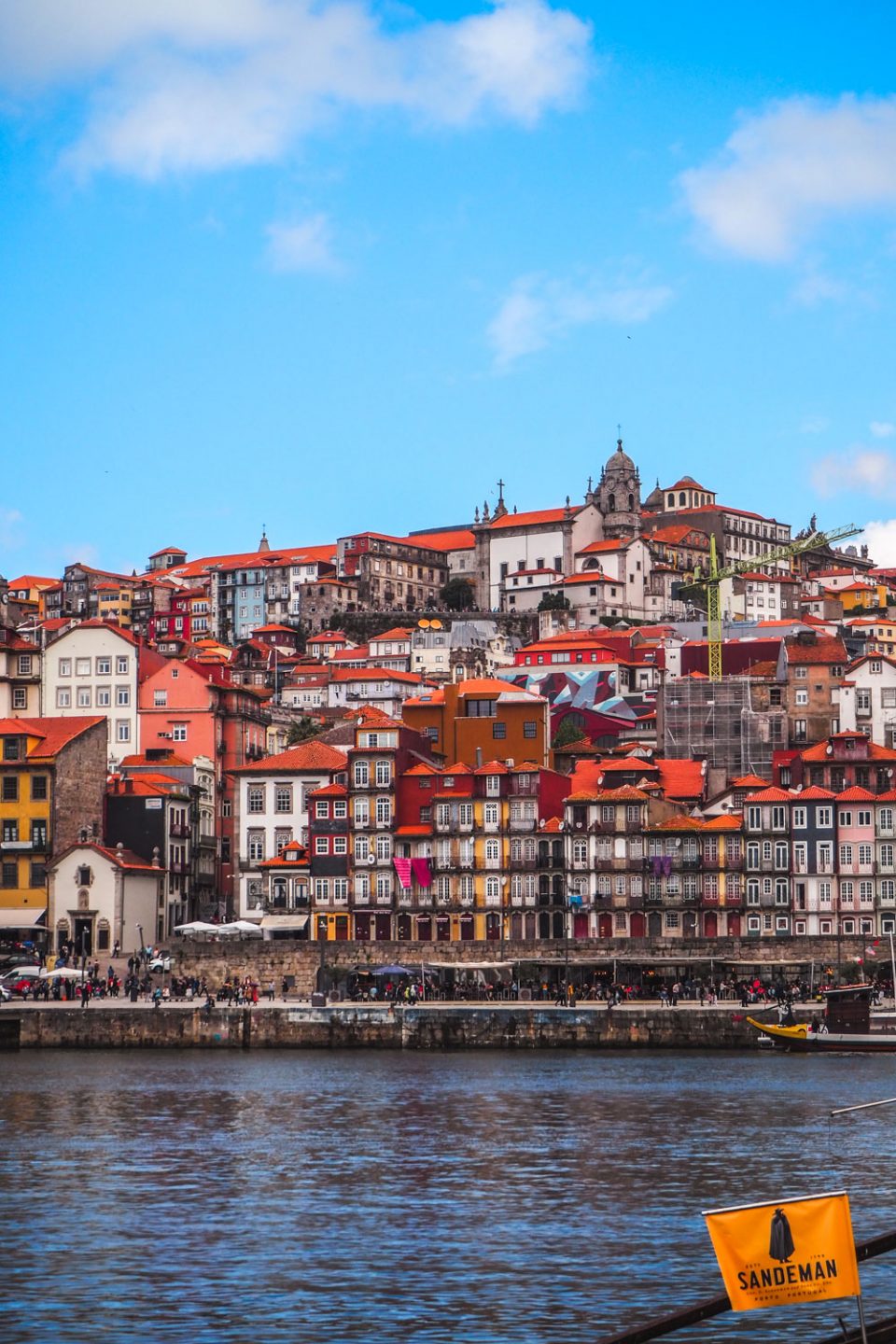
Das wunderschöne Altstadtviertel am Duoro ist vielleicht der schönste Fleck, mit Sicherheit aber der beliebteste. Hier tummeln sich tagsüber die Touristenmassen, die Restaurants drängen sich dicht an dicht und die Ausflugsboote, Künstler und Marktstände sammeln hier ihre Besucher ein. Ein wenig Abseits der Hauptplätze, bergauf in den verwinkelten Gassen der Altstadt, begegnen einen verfallene Häuser, kuschelige Ecken und die ein oder andere Katze. An vielen Stellen sieht man den Verfall und teilweise die Armut, unterbrochen von frisch rausgeputzten Fassaden und vielen Baustellen. Ganze 31 Kräne konnten wir von der Aussichtsplattform de Se de Porto zählen. Apropos Aussichtsplattform…
Miraduros (bei Sonnenuntergang)
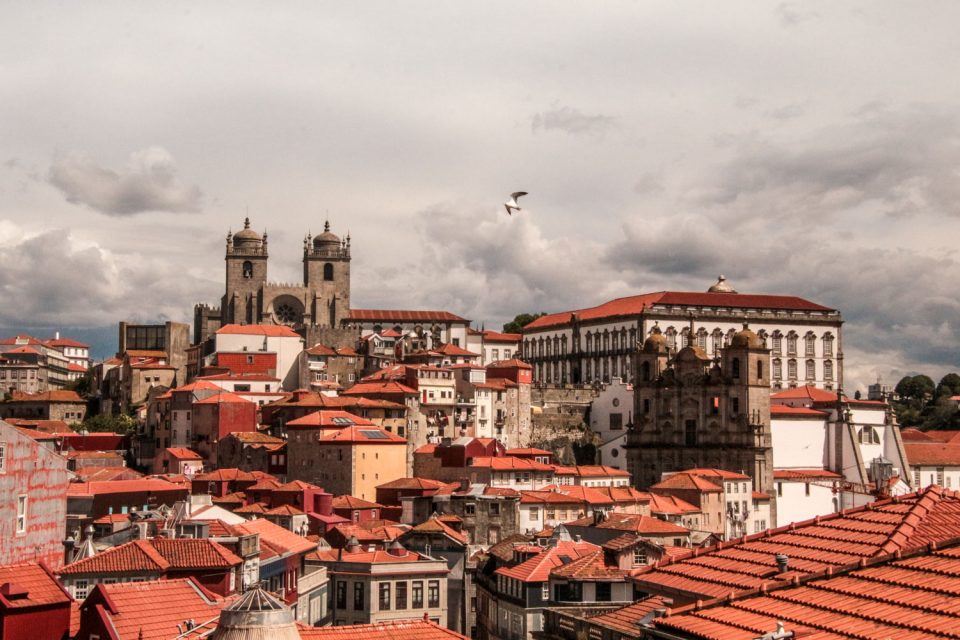
Wer mal in Lissabon war, kennt sie, die kleinen, teils versteckten Aussichtsplattformen, die sich über die ganze hügelige Stadt verteilen. Auch Porto hat sie und deswegen dürfen sie in diesem Porto Travelguide nicht fehlen. Besonders schön wird es, wenn man den Sonnenuntergang über der Stadt und, weiter hinten, dem Meer beobachten kann. Mit einem kühlen Getränk in der Hand wird man hier des Ausblicks nicht müde. Die Miraduros sind überall verteilt und sie hier einzeln aufzuzählen wäre witzlos. Man findet sie beispielsweise bei der Sé de Porto, Der Rua da Vittoria, dem Parque das Virtudes (Blick bis zum Meer!) oder dem Jardim do Morro auf der anderen Seite der Ponte Dom Luis, die eine eigene Sehenswürdigkeit ist.
Ponte Dom Luis I

Jeder der nach Bildern von Porto googelt, wird ziemlich schnell diese beeindruckende Brücke auf dem Bildschirm haben. Sie wurde vom Kollegen von Gustav Eiffel, dem Erbauer des Eiffelturms errichtet und das sieht man auch. Die stählerne Fachwerk-Konstruktion erinnert ziemlich schnell an das Pariser Wahrzeichen. Man kann sowohl oben, als auch unten die Brücke zu Fuß überqueren. Von oben hat man nicht nur einen wunderbaren Blick, es stört einen auch nur vereinzelt die vorbeirollende Metro, wodurch man viel Platz und Zeit zum Verweilen hat. Auf der unteren Seite quälen sich die Autos im Dauer-Stau über die Brücke und man selbst mit vielen anderen Menschen auf viel zu kleinen Gehsteigen mit ihnen.
Übrigens: Die Ponte Dom Luis I verbindet nicht zwei Stadtteile, sondern tatsächlich zwei separate Städte. Denn auf der anderen Seite beginnt die eigenständige Stadt Villa Nova de Gaia. Das merkt man jedoch so nicht wirklich, denn alles, inklusive Metronetz und Hop on Hop off Touren sind miteinander vernetzt und behandeln die Region als ein großes Ganzes.
Der Strand

Das gilt auch für den Strand von Matensinhos, den man gemütlich, wenn auch nicht schnell, mit der Metro erreichen kann. Hier findet sich der Hafen und auch ein beliebter Surf-Spot. Der Strand von Matosinhos ist nicht der schönste, jedoch der näheste. Fürs Füße-ins-Wasser-stecken und Sonnenuntergang beobachten, reicht es allemal. Für längere Aufenthalte würde ich lieber einen anderen Strand empfehlen (schon alleine wegen der Plattenbauten im Hintergrund).
Francesinha und andere Köstlichkeiten
Wie in meinem Porto Foodguide bereits beschrieben, findet man in dieser Stadt allerlei Köstlichkeiten. Eine regionale Spezialität ist Francesinha, was ein Brot mit Steak, Wurst, Schinken, Käse und Spiegelei in einer Biersauce ist. Klingt pervers, ist es auch, schmeckt jedoch köstlich. Ich empfehle es jedem Fleischesser, es einmal in seinem Leben zu probieren. Ich denke jedoch auch seitdem darüber nach Veganer zu werden… 😀
Sao Bento & Kirchen
Porto ist für seine tollen Azulejos bekannt (meist blaue Fliesen), die sich hauptsächlich an Kirchenfassaden wiederfinden. Aber auch der Bahnhof Sao Bento hat in der Vorhalle tolle Fliesen-Bilder, die ganze Geschichten erzählen. Wer zum Bilder machen herkommt, der muss wohl früh aufstehen, tagsüber ist es leider viel zu voll. Bessere Fotospots ergeben da die verschiedenen Kirchen, die man mit Glück sogar mal kurz für sich alleine haben kann. Besonders tolle Fotomotive sind: Igreja Capela das Almas, Igreja do Carmo und Igreja de Santo Ildefonso.
Porto Travel Guide: Shopping
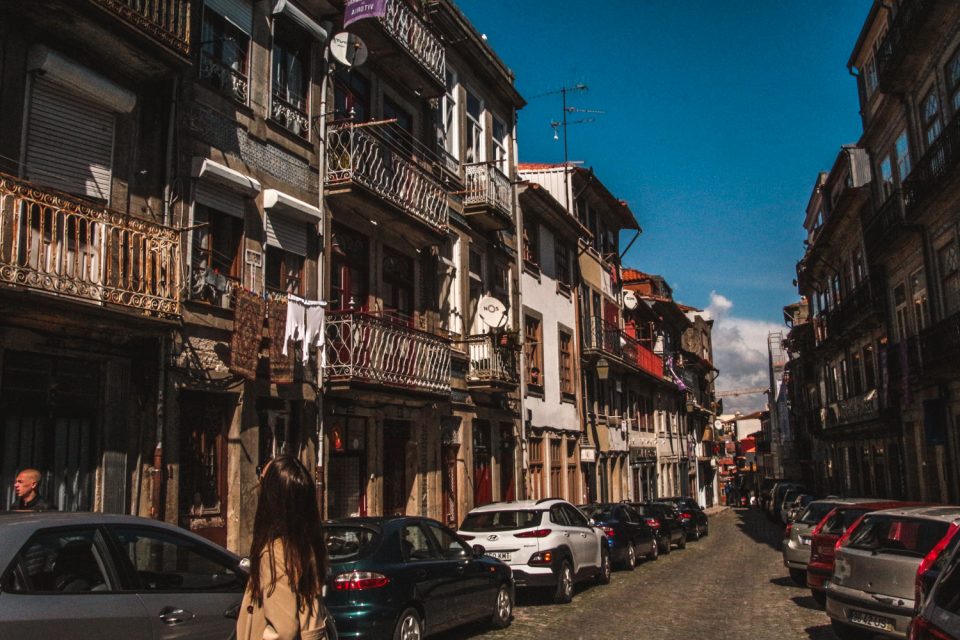
Rua das Flores
Die kleine Schwester der Rua de Santa Catarina und meiner Meinung nach die schönere Einkaufsstraße. Während in der Santa Catarina die üblichen Marken zu finden sind, reihen sich in der Flores kleine Shops mit Cafes und Restaurants dicht an dicht. Dank ihrer zentralen Lage zwar kein Geheimtipp, aber unbedingt einen Abstecher wert.
Mercado Ferreira Borges
Am unteren Ende der Rua das Flores und ein wenig um die Ecke findet man den Mercado Ferreira Borges. Was für mich auf den ersten Blick wie ein typisches Touri-Abzocke-Ding aussah, entpuppte sich als ein kleiner Markt mit allerlei Handcraft. Seifen, Schmuck und Gewürze drängen sich in der kleinen Halle nebeneinander. Nicht günstig, dafür originell.
Weitere Märkte
Auch am oberen Ende der Ponte Dom Luis I fand sich ein kleiner Markt mit vielen Massenwaren und ein paar Perlen dazwischen. Bspw. ein Stand von einem Paar, die handgefertigten Schmuck verkaufen und zu deren Kunden ich mich rasch zählte. Ich weiß jedoch nicht, ob sie jeden Tag hier anzutreffen sind, ich hatte aber 2 Tage hintereinander Glück. Am Ufer des Duoro zu beiden Seiten finden sich ebenfalls Märkte. Während ich den Eindruck hatte, dass in Porto hauptsächlich Massen-Ramsch verkauft wurde, fand man in Gaia ebenfalls das ein oder andere Einzelstück. Bspw. ein Stand von einem Deutschen (oder deutschsprachigen), der aus Treibholz kleine Städte baute, die man auseinander schieben kann. Hier wechseln sich die Stände im 2-Tages-Takt ab.
Kunstviertel
Porto hat auch ein Kunstviertel (Richtung Rua de Cedofeita), von dem ich persönlich jedoch überaus enttäuscht war. Vielleicht verstehe ich aber auch nur zu wenig davon, weshalb ich es in diesem Porto Travelguide nicht auslassen wollte.

Was wir nicht gemacht haben
Es gibt ein paar Sachen, die wir ausgelassen haben, die dennoch in quasi jedem Guide erwähnt werden und deswegen auch hier nicht fehlen sollten.
Bolhao Market
Der Markt scheint wirklich toll zu sein (laut Bildern und Berichten), leider ist die Markthalle momentan nichts weiter als ein Gebäude-Gerippe, denn sie wird seit 2018 renoviert. Jetzt (April 2019) schien mir noch lange kein Ende in Sicht. Der Markt ist wohl gleich in der Nähe ausgelagert, wir haben aber dann darauf verzichtet (schließlich geht es mehr um den Flair, als um die Produkte).
Livaria Lello
Die älteste Buchhandlung der Welt und vielleicht auch die schönste (falls es hier ein Ranking gibt) steht tatsächlich in Porto. Ich bin mir sicher, dass sie toll ist, jedoch ging die Schlange über 150 Meter die Straße entlang, am anderen Tag quer über die Straße. Auch wenn der Zutritt beschränkt (und kostenpflichtig) ist, kann ich mir nicht vorstellen, dass man hier vor lauter Menschen noch was sehen kann. Und die Zeit ist mir persönlich dann auch zu wertvoll.
Wine Tasting
Porto ist berühmt für seinen Portwein, der überall in der umliegenden Gegend angebaut wird. Von Schiffsfahrten in die Anbaugebiete bis Weinkeller-Touren mit Verkostungen findet man hier natürlich alles rund um den beliebten Port-Wein. Da ich nicht so der große Weintrinker bin und meine mitreisende Mutter schon gar nicht, haben wir diesen Punkt ausgelassen.
Torre dos Clerigos
Der höchste Turm der Stadt bietet wohl nach über 200 Stufen einen wahnsinnigen Blick über eben diese. Dank etlicher Miraduros und Rooftop-Cocktail waren wir jedoch schon von Ausblicken gesättigt genug. Und, wie erwähnt, stehe ich ungern in Schlangen an.
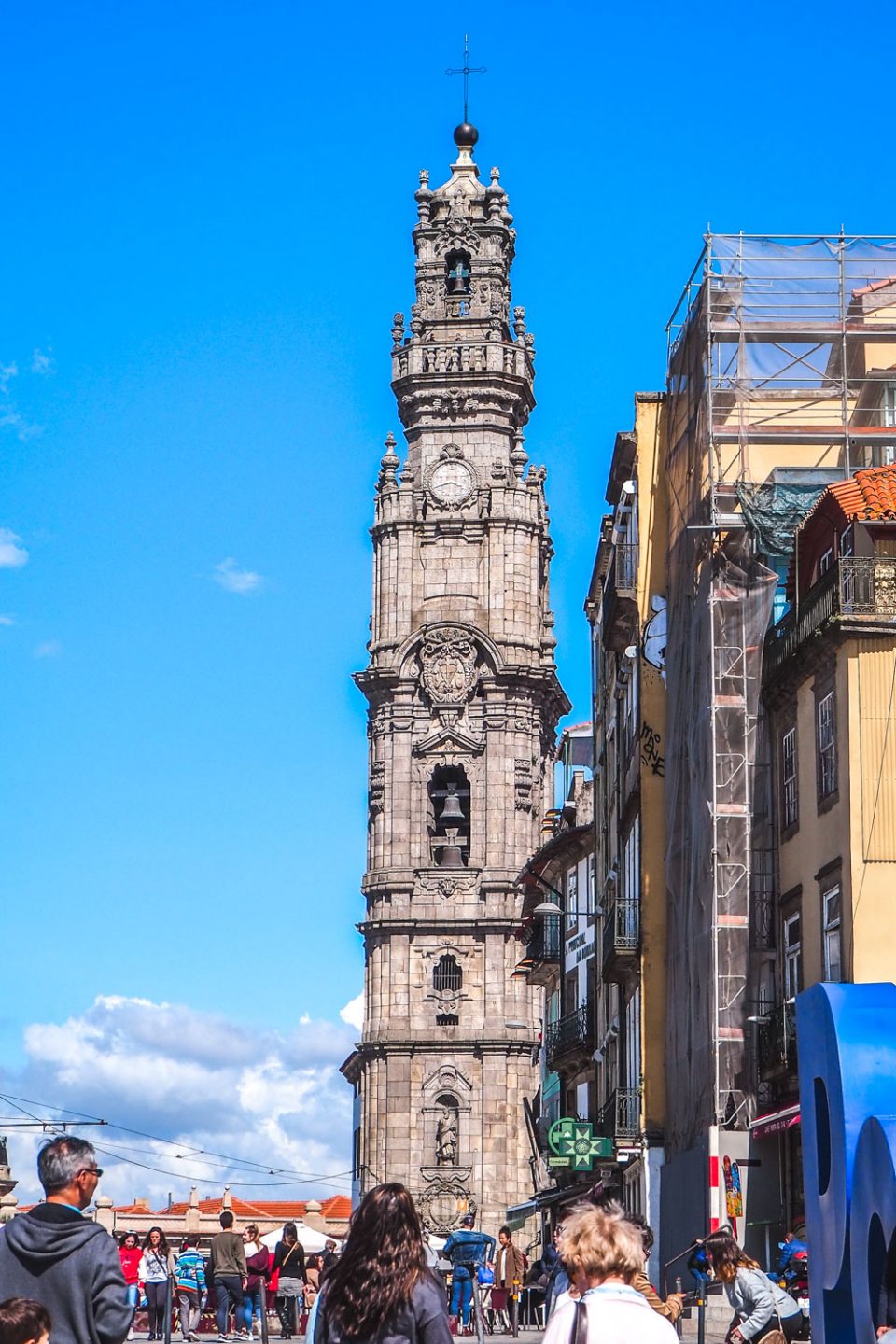
Habt ihr noch mehr Tipps für den Porto Travel Guide? Oder habt ihr Fragen? Dann schreibt es mir sehr gerne in die Kommentare.

English version
Porto travel guide
Porto is the unknown little brother of Lisbon and second largest city in Portugal. The city has so much charm that I almost liked it better. Thats why you find many reasons and inspirations in this Porto travel guide to discover the city at the next opportunity.
Porto Travel Guide: Arrival, accommodation, travel duration and locomotion
Getting there
Since Porto has its own airport, the journey is relatively easy. The metro also goes directly from the airport to the city center, making a cheap and fast alternative to taxi & co.
locomotion
At first glance, the metro system is a bit more complicated and the signs are flawed. On the first purchase, you buy the ticket and a ride (or even a day ticket, as the case may be). Since Porto is very easy to walk through, I recommend only buying single journeys.
If you do so, then you always buy 1 ticket, which is valid for one direction or 2 tickets for round trip. Which z (zone) you need, you can see on a narrow panel next to the display. Here you can see which station you have to go to and on its right is z1-6. Should you also arrive at the airport and want to go to Sao Bento in the city center, for example, then you buy a ticket with a ticket z4 and pay € 2.60, with 60ct the cost of the ticket. This you can then recharge the ticket again, do not throw away!
There are also trams, buses, taxis and Uber. But we have no experience with that.
Accommodation
As accommodation, I recommend a hotel / apartment in the old town of Ribeira. Here you are super central and fast at all important places. Restaurants and cafes are everywhere. And it’s relatively quiet in the evening. I am sure it is nice to live everywhere near the city center, but maybe don’t choose a place near Rua Candido dos Reis, unless you want to party.
Duration
We spent 3.5 days in Porto and I think that was the perfect length. You need at least 2 days to see everything important. From 4 days you will probably have seen everything without stress. Who wants to explore the surrounding area, can surely spend much time in this cuddly city.
Activities

Hop on bus tour
It’s not very creative, but I love these bus tours to get an overview. First of all, on our first day there was a lot of rain. So we have been happy to see the city without getting soaking wet. You can drive 2 routes and are therefore busy per route (and depending on the traffic jam) for about 1-1,5h. The headphone plugs are broken in many places or with loose contact and the information is mediocre, but better than in Lisbon. For this you could theoretically join in two wine tastings and with some providers also a tour on the Douro But we haven’t done that.
Ribeira
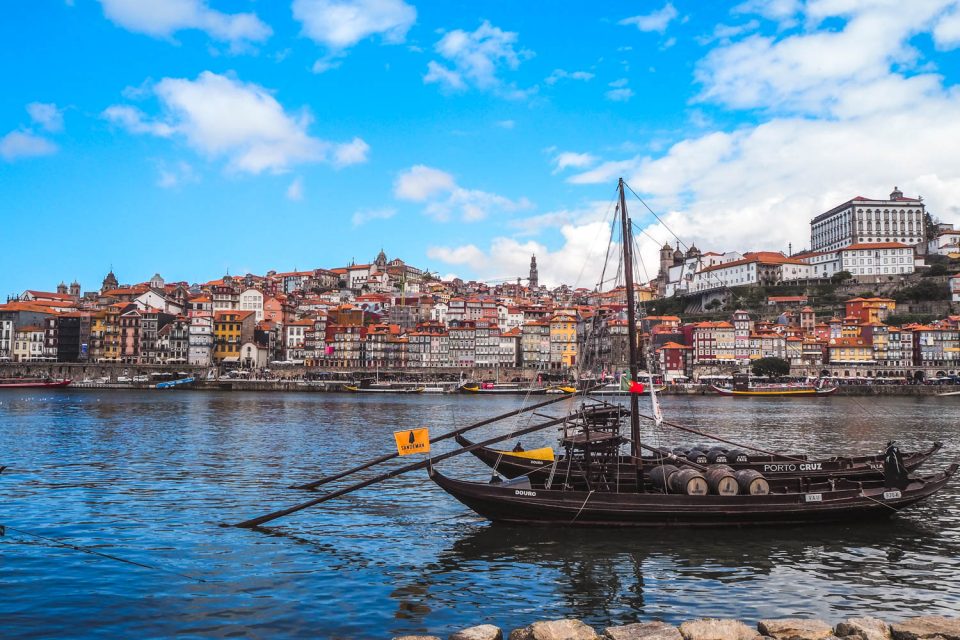
The beautiful old town on Douro is perhaps the most beautiful spot, but certainly the most popular. Here are the tourist crowds, the restaurants crowd tightly and the excursion boats, artists and market stalls find there customers. A little off the main squares, uphill in the winding streets of the old town, you will find dilapidated houses, cuddly corners and some cats. In many places you can see the decay and sometimes the poverty, interrupted by freshly plastered facades and many construction sites. We could spot a total of 31 cranes from the viewing platform. Speaking of viewing platform…
Miraduros (at sunset)

Anyone who has ever been to Lisbon knows the small, sometimes hidden viewing platforms that are spread over the entire hilly city. Also Porto has them and therefore can not be missed in this Porto travel guide. It is especially nice when you see the sunset over the city. With a cool drink in hand you will not get bored of the sight. The Miraduros are distributed everywhere and to enumerate individually would be useless. You will find them at the Sé de Porto, Rua da Vittoria, Parque de Virtudes (overlooking the sea) or Jardim de Morro on the other side of Ponte Dom Luis, which is a sight itself.
Ponte Dom Luis I
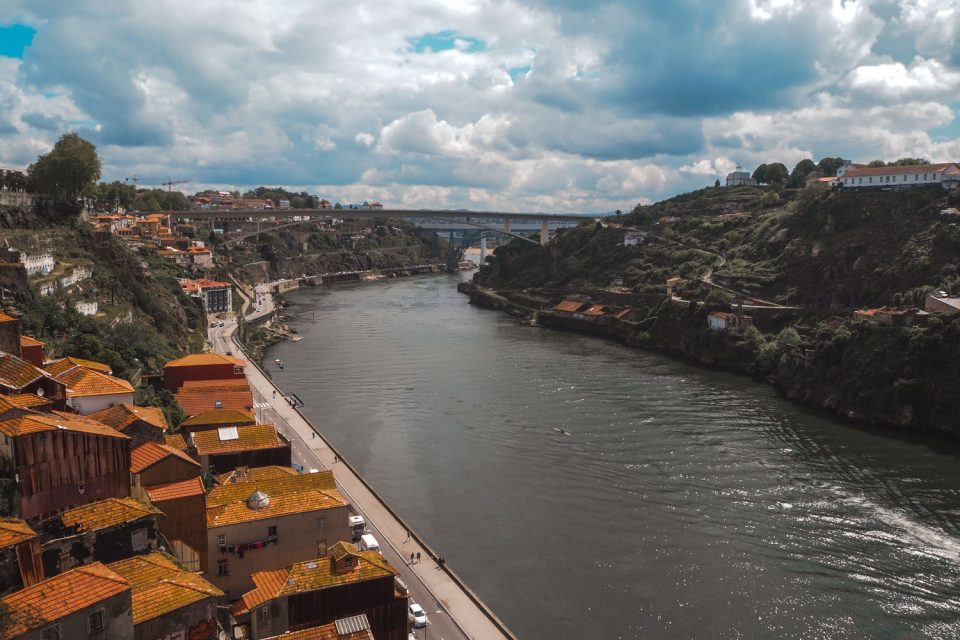
Anyone who googles for pictures of Porto will soon have this impressive bridge on the screen. It was built by a colleague of Gustav Eiffel, the builder of the Eiffel Tower, and you can see it. The steel truss construction reminds quite quickly of the Parisian landmark. You can cross the bridge by foot, both above and below. From the top you not only have a wonderful view, it bothers only the occasional passing by metro, which gives you plenty of space and time to relax. On the lower side, the cars in the permanent traffic jam over the bridge and you yourself with many other people on much too small sidewalks with them.
By the way: The Ponte Dom Luis I does not connect two districts, but actually two separate cities. On the other side, the independent town of Villa Nova de Gaia begins. But you do not really realize that, because everything, including the Metro and Hop on Hop Off tours are networked together and treat the region as one big whole.
The Beach

This also applies to the beach of Matosinhos, which can be reached comfortably, if not quickly, by metro. Here you will find the harbor and also a popular surfing spot. The beach of Matesinhos is not the most beautiful, but the closest. For getting in the water and watching the sunset, it’s enough. For longer stays I would recommend a different beach (alone because of the ugly houses in the background).
Francesinha and other delicacies
As already described in my Porto Food Guide, you will find all sorts of delicacies in this city. A regional specialty is Francesinha, which is a bread with steak, sausage, ham, cheese and fried egg in a beer sauce. Sounds perverted, it is too, but tastes delicious. I recommend every meat eater to try it once in his life. But I also think about becoming a vegan since then… 😀
Sao Bento & Churches
Porto is known for its great azulejos (mostly blue tiles), which are mainly found on church facades. But also the station Sao Bento has in the lobby great tiles pictures that tell whole stories. Anyone who comes to take pictures, must get up early, unfortunately, it is much too crowded during the day. Better photo spots arise because the different churches, which you can have with a little luck even for a short time for yourself. Particularly great photo opportunities are: Igreja Capela das Almas, Igreja do Carmo and Igreja de Santo Ildefonso.
Shopping
Rua das Flores
The little sister of Rua de Santa Catarina and in my opinion the nicer shopping street. While the usual brands can be found in the Santa Catarina, small shops with cafes and restaurants line up in the Flores. Thanks to its central location, no insider tip, but definitely worth a visit.
Mercado Ferreira Borges
At the bottom of Rua das Flores and just around the corner you will find the Mercado Ferreira Borges. What at first looked like a typical tourist rip-off thing turned out to be a small market with all sorts of handcraft. Soaps, jewelry and spices throng together in the small hall. Not cheap, but original.
Other markets
Also at the top of the Ponte Dom Luis I there was a small market with many mass products and a few pearls in between. For example. a booth of a couple who sell handmade jewelry and I quickly became their customer. I do not know if they are here every day, but I was lucky two days in a row. On the banks of the Douro on both sides are also markets. While I had the impression that in Porto mainly mass junk was sold, I found in Gaia also one or the other unique piece. For example. a stand by a German (or German-speaking) who built small driftwood towns. Here, the stands alternate in a 2-day cycle.
Arts district
Porto also has an art quarter (towards Rua de Cedofeita), of which I was personally very disappointed. Maybe I understand too little of it, why I did not want to miss it in this Porto Travel Guide.
What we did not do
There are a few things we have omitted that are nevertheless mentioned in almost every guide and therefore should not be missed here.
Bolhao Market
The market seems to be really great (according to pictures and reports). Unfortunately, the market hall is currently nothing more than a building skeleton, because it has been renovated since 2018. Now (April 2019), there seemed to be no end in sight for a long time. The market is probably outsourced nearby, but then we have renounced it (after all, it’s more about the flair than the products).
Livaria Lello
The oldest bookstore in the world and maybe the most beautiful (if there is a ranking here) is actually in Porto. I’m sure it’s great, but the queue reached 150 meters down the street, the other day across the street. Even if the access is limited (and subject to a charge), I can not imagine that you can see something here in front of all people. And the time is too valuable to me personally.
Wine tasting
Porto is famous for its port wine, which is grown throughout the surrounding area. From boat trips in the growing areas to wine cellar tours with tastings you will find everything here, of course, around the popular port wine. Since I’m not the big wine drinker and my traveling mother also certainly not, we have omitted this point.
Torre dos Clerigos
The tallest tower in the city, after more than 200 steps, offers an insane view over the city. Thanks to several Miraduros and Rooftop cocktail, we were already saturated by views enough. And, as I said, I do not like queuing up.
Do you have any more tips for Porto and surroundings? Or do you have questions? Then I like to write in the comments.



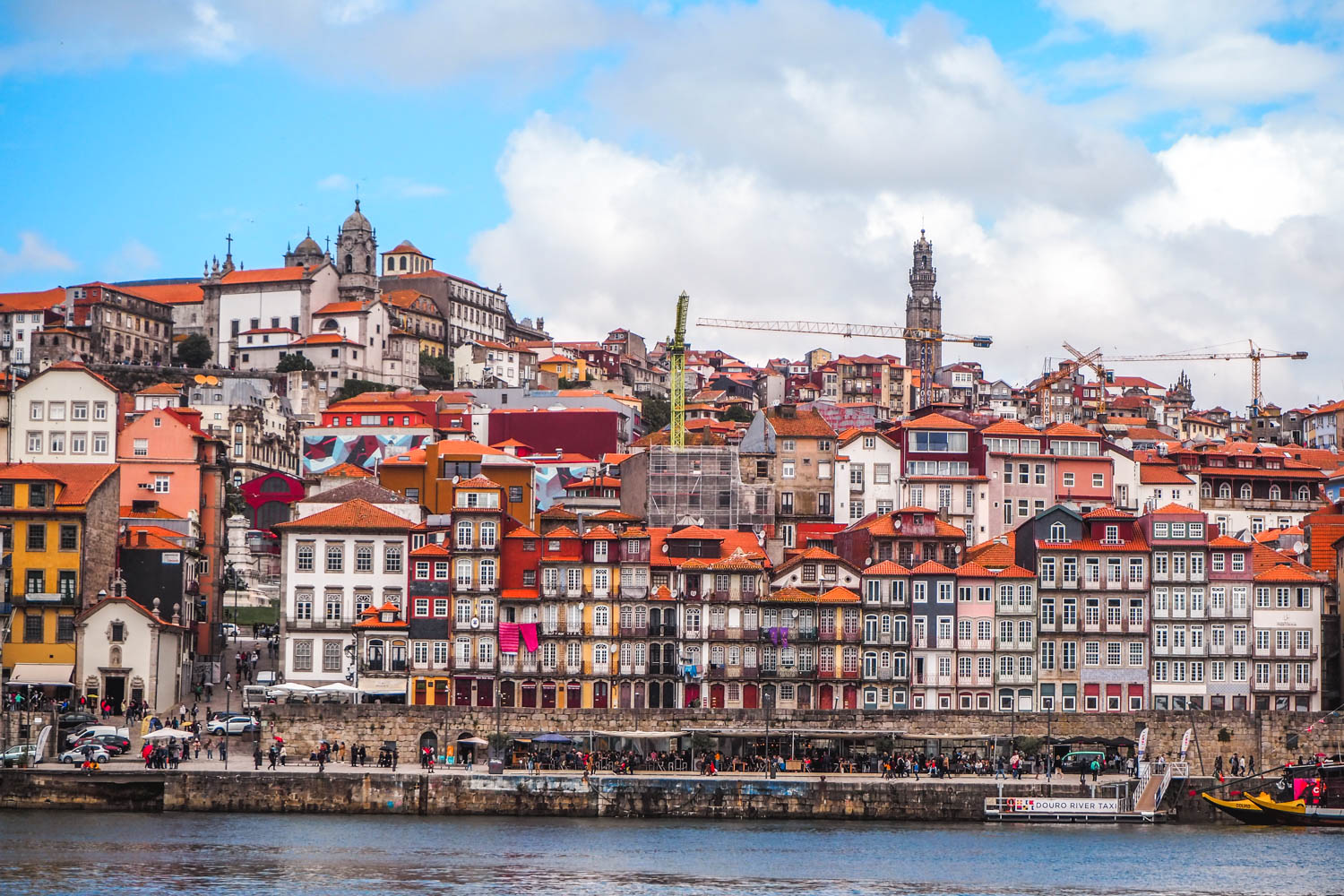
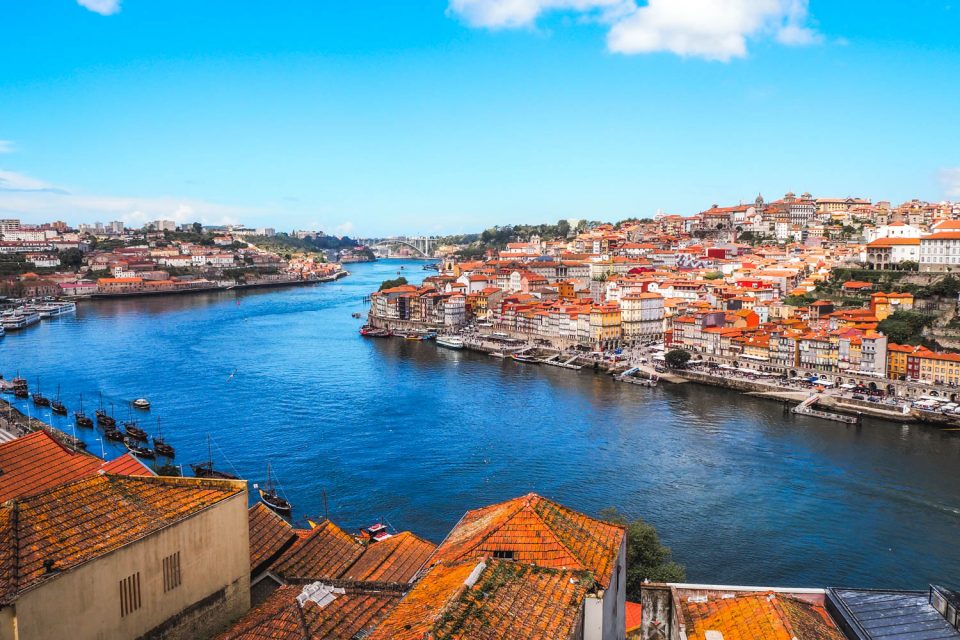






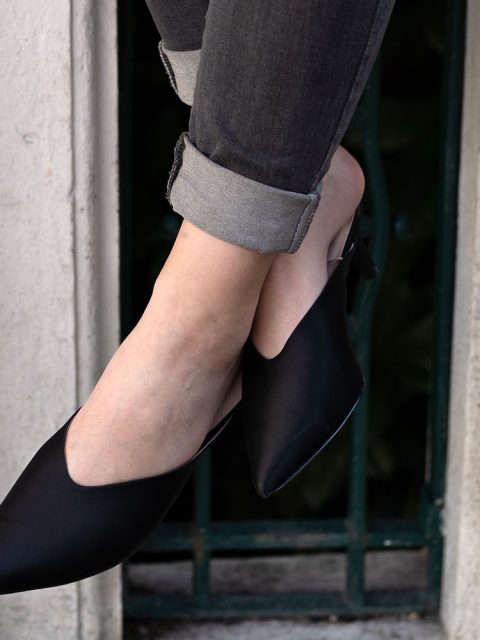
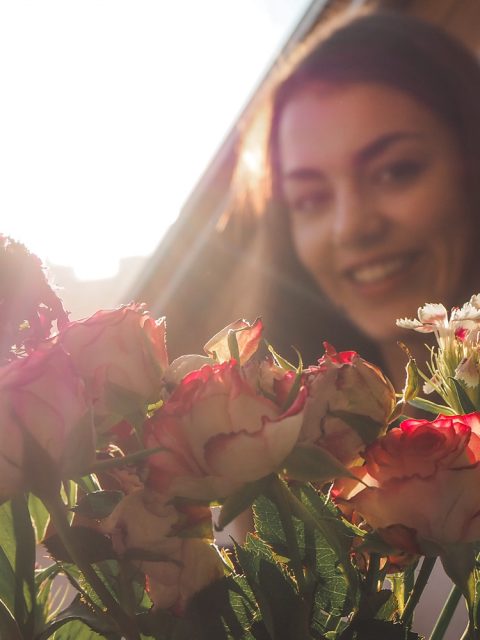

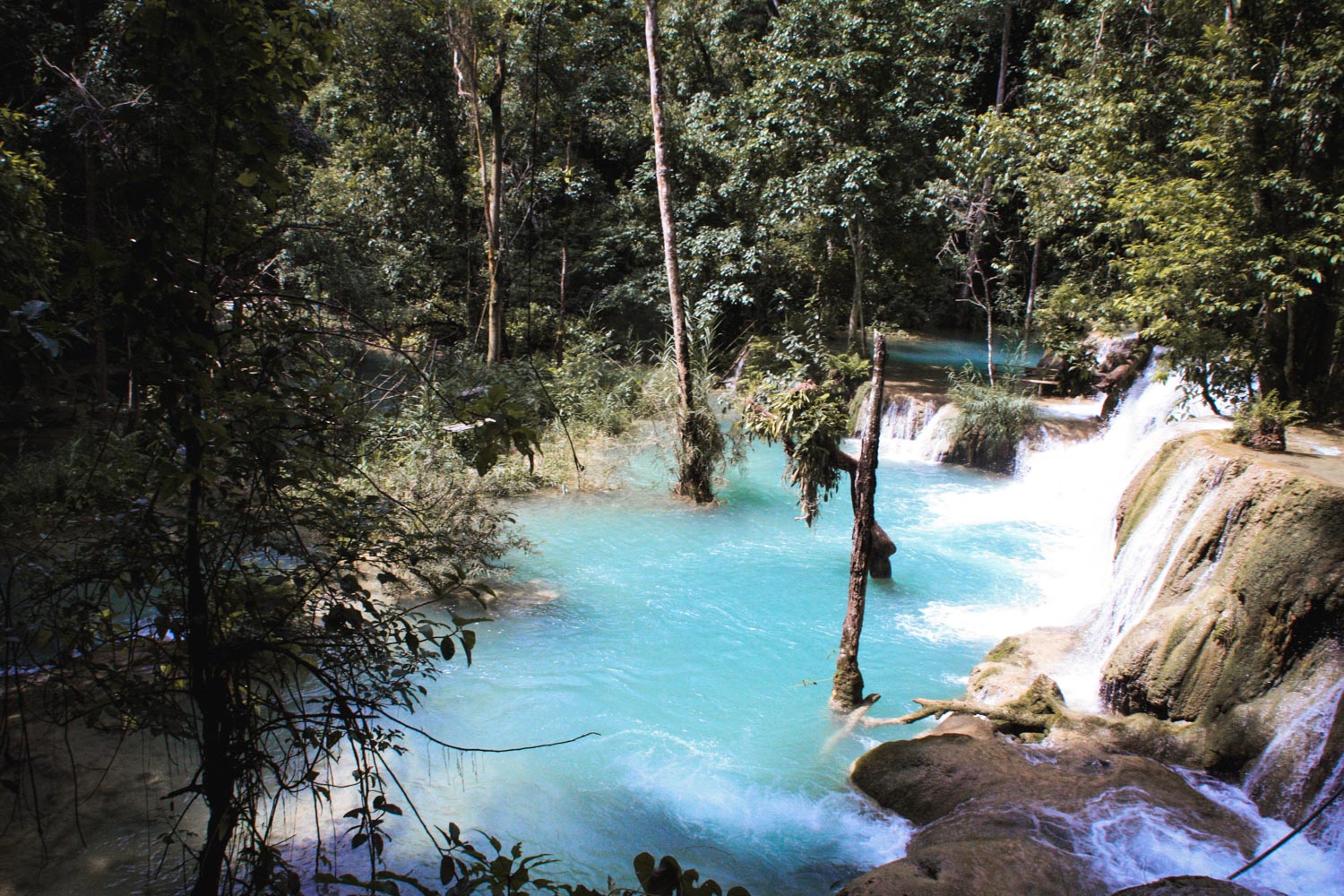

9 Comments
Algarve Tipps – Portugal in der Nebensaison - The Dorie Blog
2 Jahren ago[…] dabei an die heißen Sommermonate, aber die Algarve hat auch im Winter einiges zu bieten. Ich kann Portugal in der Nebensaison wärmstens empfehlen – […]
Alena
7 Jahren agowow, ein super Post und ganz tolle Tipps! Ich mag auch deine Fotos, die machen gleich total Urlaubsstimmung!
Ich war noch nie in Portugal – im September gehts das erste Mal nach Lissabon, ich bin so gespannt!
Porto packe ich mal auf meine Liste! Würdest du nochmal hinfliegen?
Liebst,
Alena
lookslikeperfect.net
Dorie
7 Jahren agoDanke liebe Alena, das freut mich sehr zu hören. 🙂
Ich würde definitiv nochmal nach Porto fliegen. Vielleicht nicht sofort aber in ein paar Jahren. Ich habe mich wirklich total wohl gefühlt und es gibt auch im Umland noch so viel zu entdecken.
Übrigens: Zu Lissabon habe ich auch einen Guide online, falls es dir was nützt: https://thedorie.com/ola-lisboa-ein-reiseguide-fuer-lissabon
Hab einen schönen Sonntag!
Reni E.
7 Jahren agoHallo liebe Dorie,
zunächst einmal bin ich mal wieder sehr beeindruckt von diesem aufwendigen Beitrag!!!
Ich war vor vielen Jahren mal in Porto und war begeistert von der Stadt. Ich würde gerne nochmal hin fahren.
Hab noch einen schönen Maifeiertag
Reni
Dorie
7 Jahren agoVielen lieben Dank 🙂 Das freut mich, dass man die Mühe dahinter erkennt!
Ich würde wahrscheinlich auch irgendwann mal wieder nach Porto fahren. Es ist wirklich eine tolle Stadt 🙂
Einen schönen Sonntag wünsche ich dir
Liebe Grüße
Sabina@OceanblueStyle
7 Jahren agoDu hast wirklich Schönes von Porto hier mitgebracht. Es gibt die Stadt sehr gut wieder. Die Weintour lohnt sich total. Portwein ist ja eher ein Depritif und ich fand es toll, soviel Neues darum zu erfahren. Etwa, dass es auch weißen Portwein gibt.
Wir waren im Juni dort und hatten viel Spaß, mit den Portuensern das Fest des Hl. Johannes zu feiern. Da mein Mann groß ist, hatten die Einheimischen viel Spaß, ihm mit dem traditionellen Poree auf den Kopf klopfen. Das war fast ein Wettbewerb …sehr lustig.
Liebe Grüße von Sabina
Dorie
7 Jahren agoWow, das klingt ja richtig super. So ein Fest mit den Einheimischen zu Feiern ist bestimmt ein ganz besonderes Erlebnis. Was für ein Glück 🙂
Sollte ich wieder nach Porto kommen, dann werde ich auch so eine Winetasting Tour machen.
Liebe Grüße und schönen Sonntag 🙂
Till
7 Jahren agoJa, Porto und das Umfeld (Dourotal und die Costa Verde) haben uns auch nachhaltig beeindruckt. Ein interessantes Fortbewegungsmittel möchte ich noch empfehlen: Die Touren mit dem Elektrotuktuk, die scheint es auch nach wie vor zu geben. Südostasienfeeling am westlichen Ende Europas, unsere Lady am Steuer war zudem äußerst kompetent. Hier sollten ein paar Bildchen der Tour dabei sein: https://timafe.wordpress.com/2015/11/03/dortmund2porto/ LG Till
Dorie
7 Jahren agoJa, die TukTuks gibt es noch 🙂 Mir ist aufgefallen, dass sie fast ausschließlich von Frauen gefahren werden 😀 Und ich finde es toll, dass sie elektrisch sind, denn in Porto riecht es eh ganz schön nach Abgasen. Wenn ich wieder hin komme, werde ich das mal ausprobieren 🙂
Liebe Grüße!